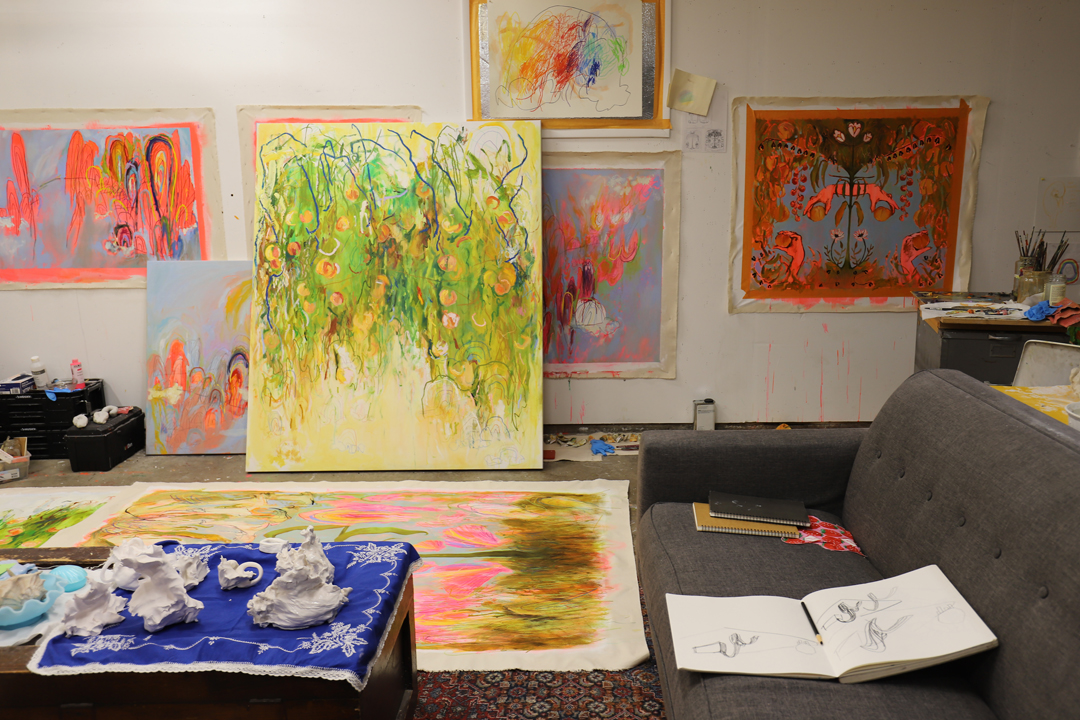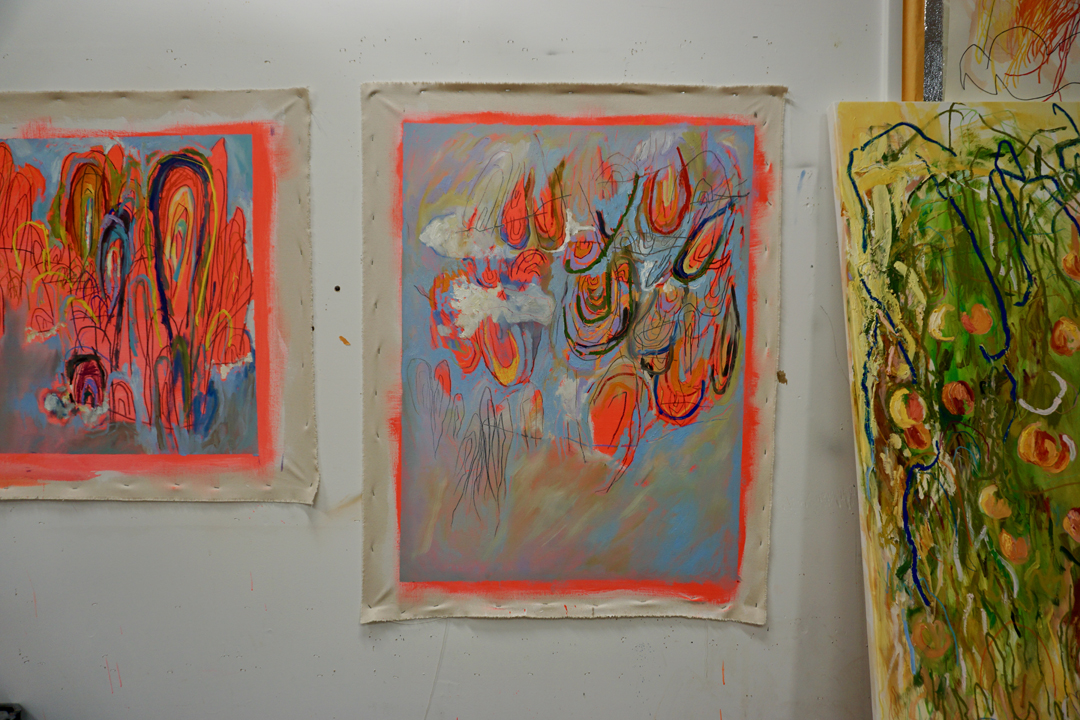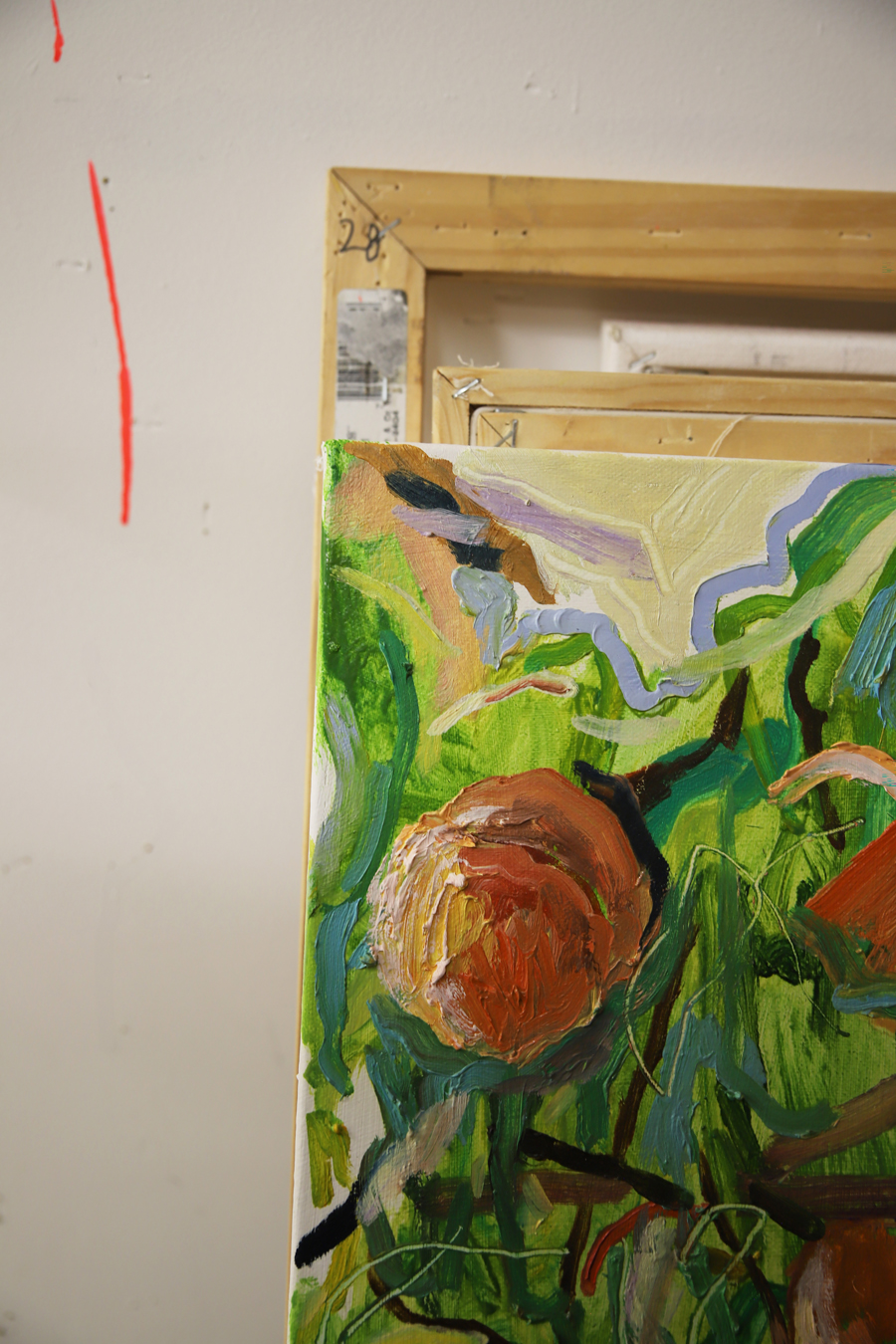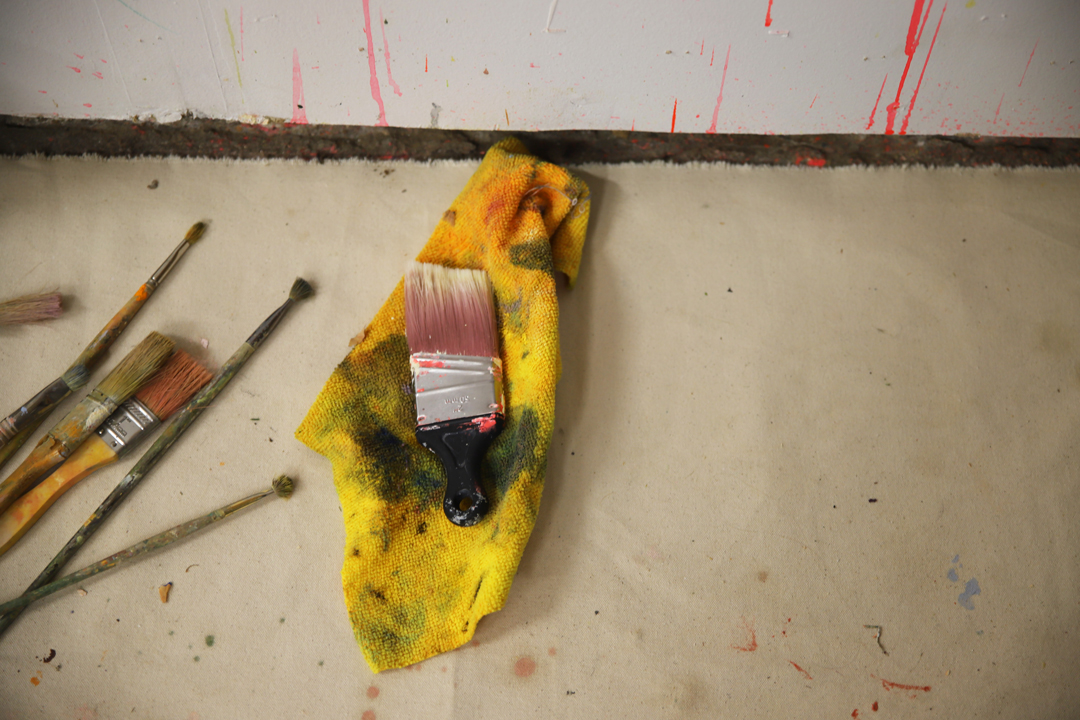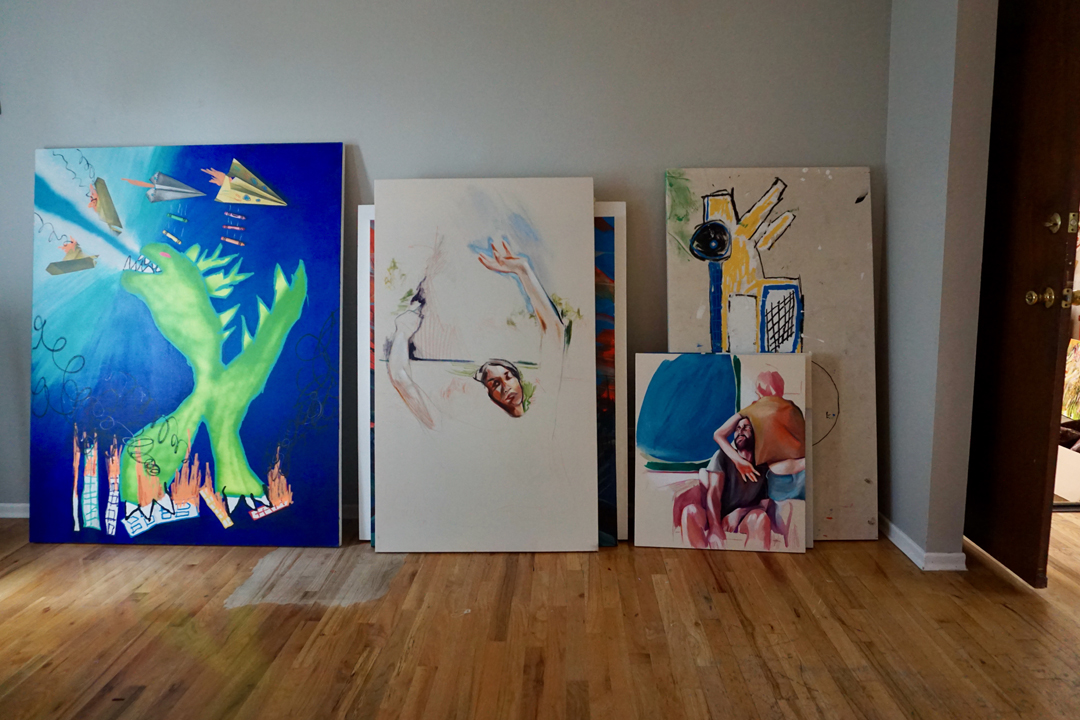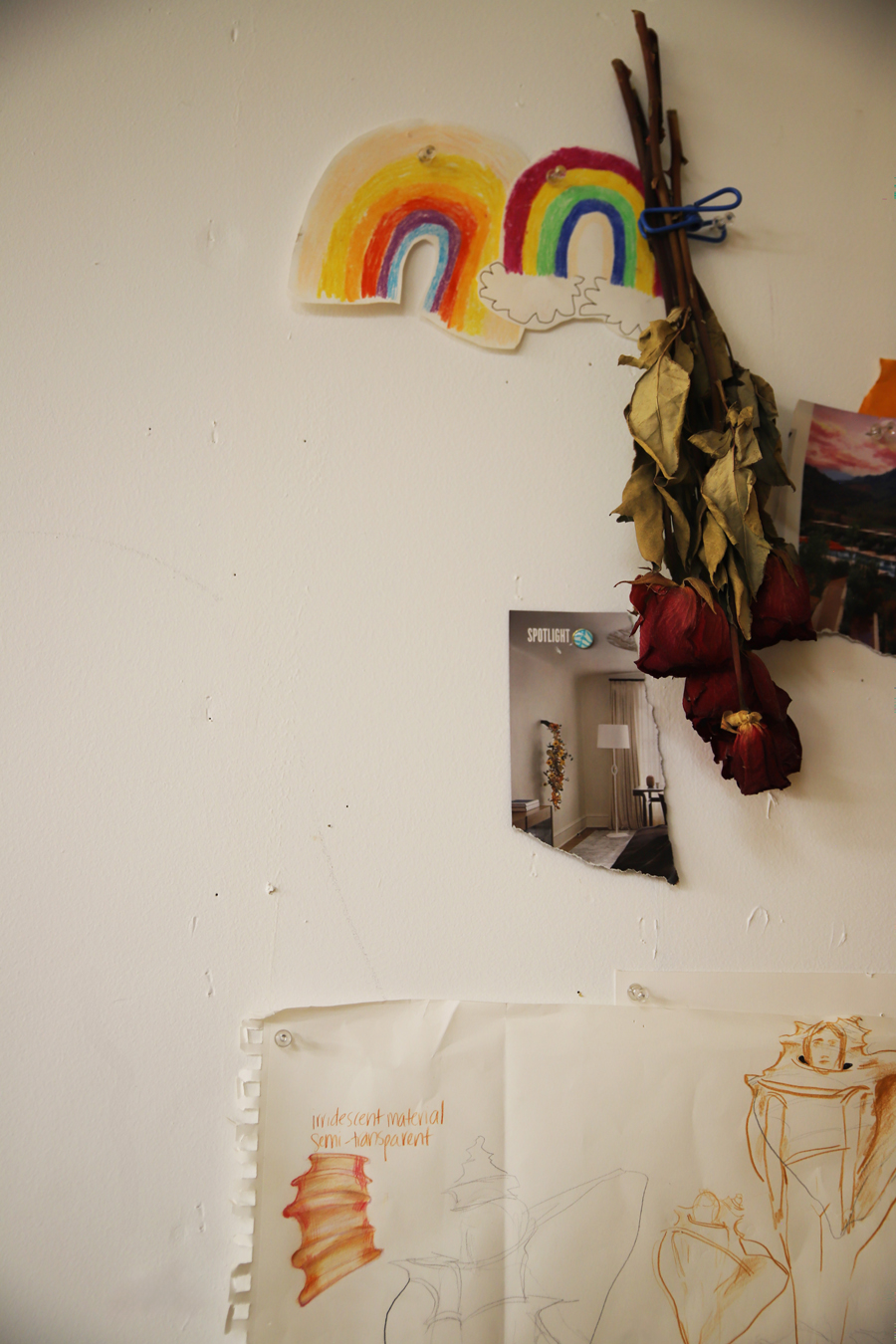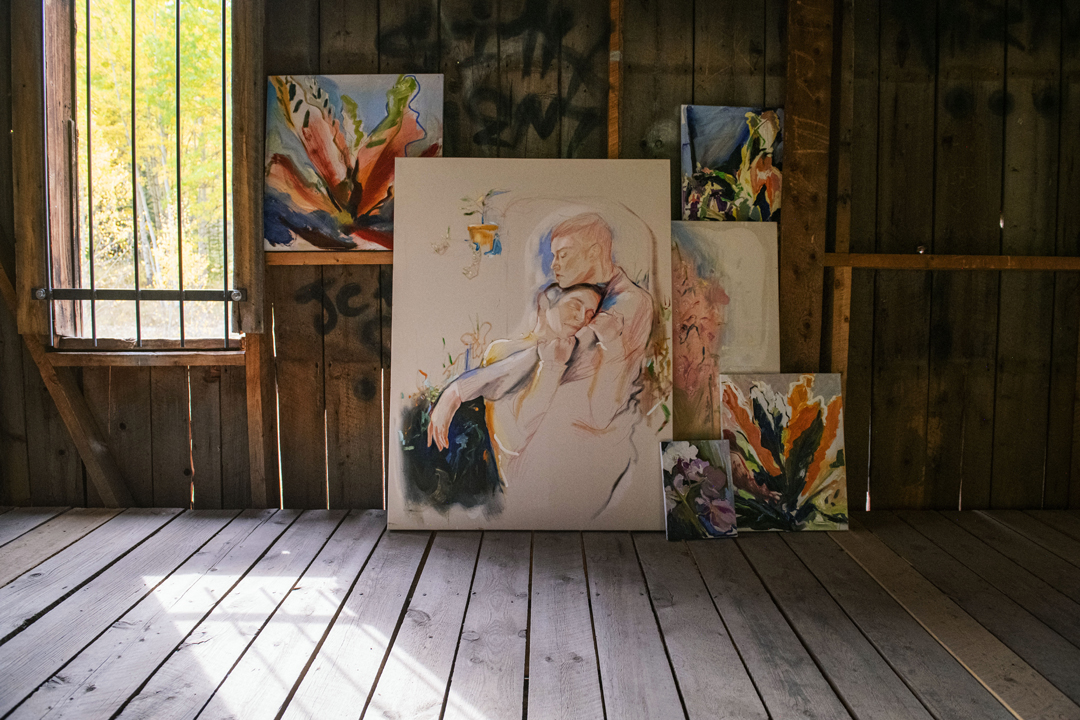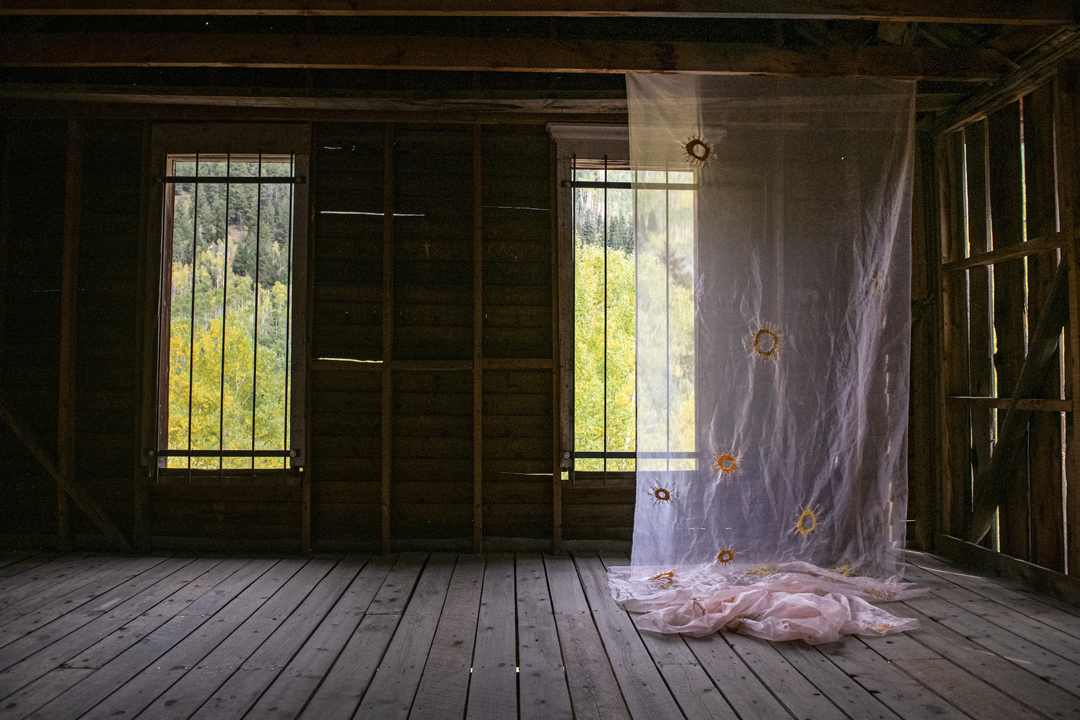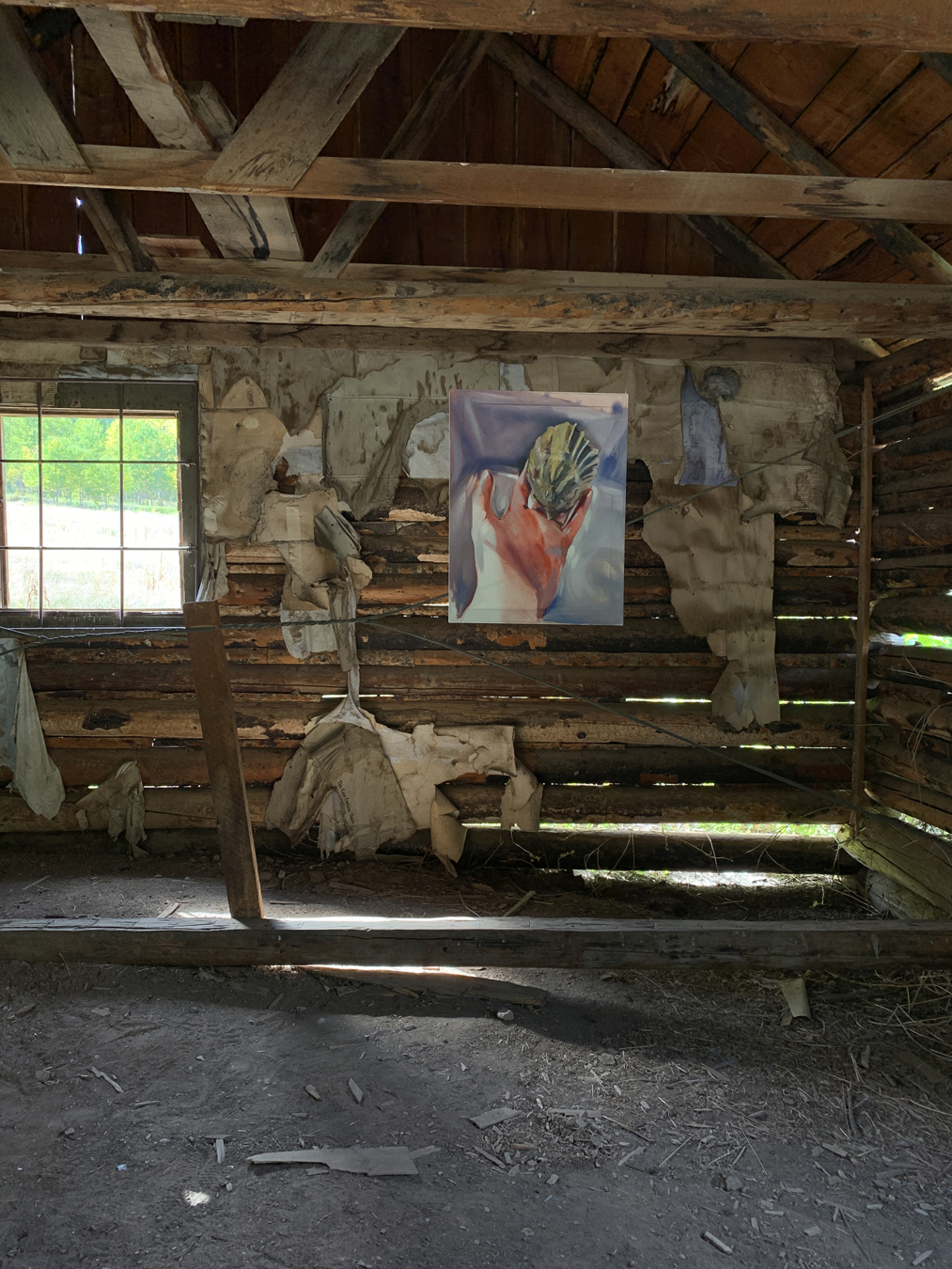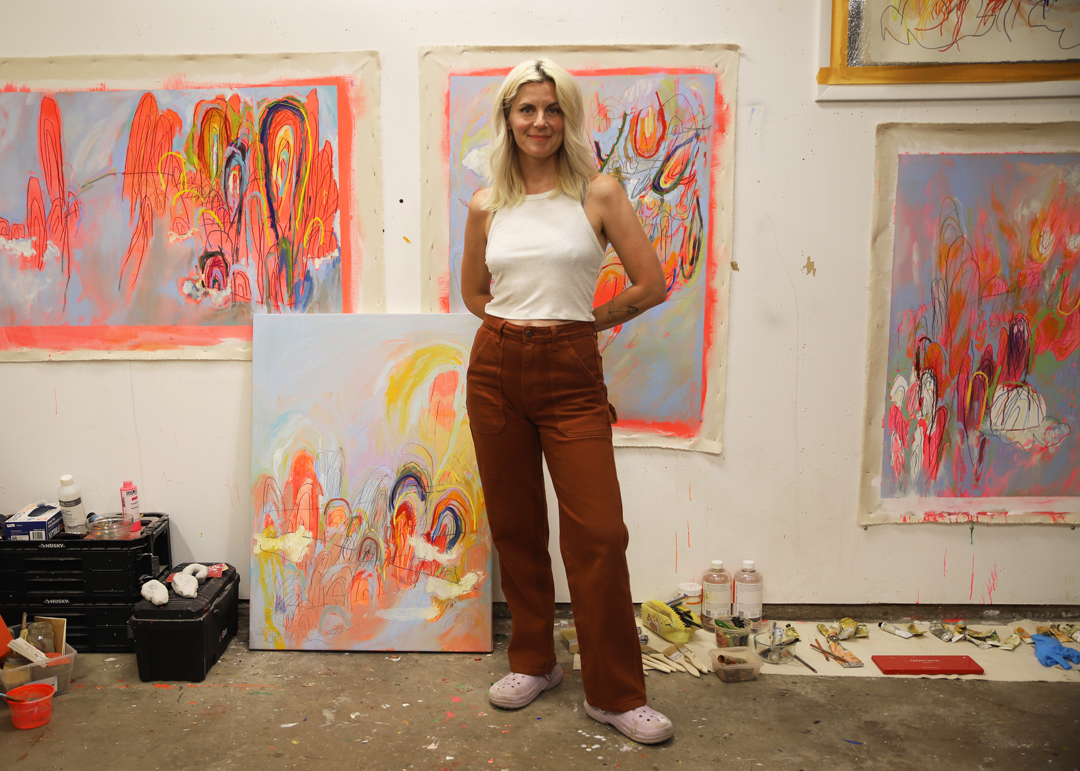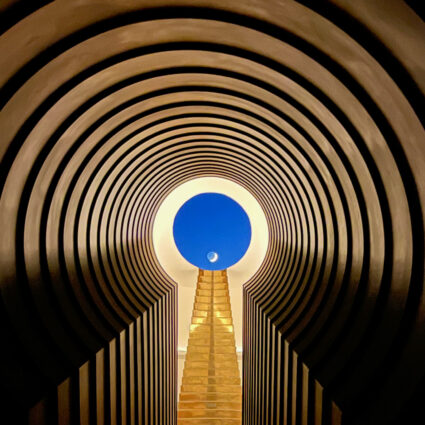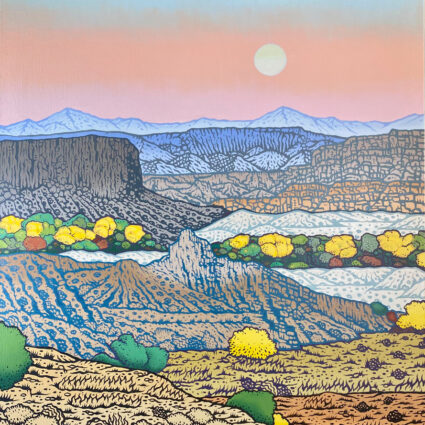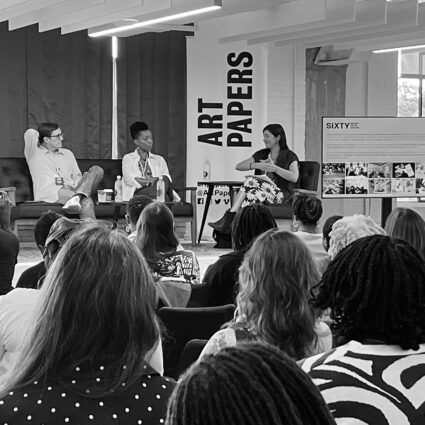Denver-based artist Kaitlyn Tucek has a seemingly boundless practice, but working without a dedicated space will be a new challenge.

Kaitlyn Tucek is moving house. I’d be remiss not to mention this fact up front as pertinent to her art practice: the artist has used the two-car garage at her residence in southwest Denver as a studio for the last two years. Before that, Tucek worked at ArtPark, RedLine Contemporary Art Gallery’s first satellite studios in the Five Points neighborhood, as part of the organization’s first off-site cohort. But now she’s scheduled to leave her home atelier without guarantee of another—a destabilizing premise for the full-time creative.
Tucek’s garage was inviting yet partially vacated when I met her on a cloudy Denver day earlier this summer. The artist shared this studio with her husband, economist and fellow artist Matt Tripodi, who had cleared his corner of the workroom by the time I arrived. Still, the space felt vibrant and rosy as only a working artist studio can.
Easels and toolboxes congregated next to jars of unidentified liquids. Porcelain clay blocks and half-drunk soda cans punctuated every work table. A still life reference in the corner boasted dried roses, their blush echoed by the tufted velvet chair at the center of the room. And on the wall, paintings I’ve so far admired only through my phone screen.
“I just don’t really have boundaries,” Tucek says of her practice, evidenced by the artist’s interests, output, and workspace. She’s really into shells right now, and her porcelain proxies commingle with paintbrushes and buckets of acrylic medium on the studio floor.
When she first moved to Denver twelve years ago, Tucek’s obsessions ran toward magpies, local Corvidae with mixed symbolism (she calls them “complicated icons”)—from bad omens to good fortune. Later came rainbows, drawn first by her daughter and then tacked to the studio’s walls as metaphoric and literal inspiration. The most striking of Tucek’s paintings incorporate all of her fantasies into near-symmetrical, fairytale-like scenes that pulse with layered allegory—hands undulate from thick stalks to grasp at fruits and flora—and a fecundity that literally drips off of the canvas.
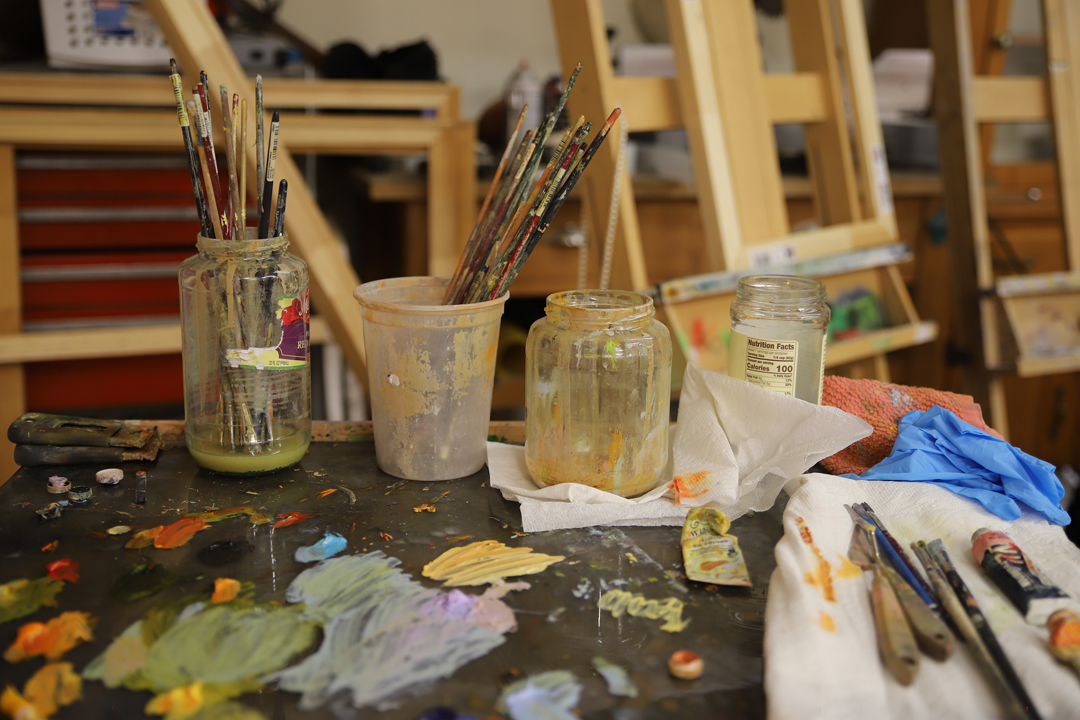
A few years ago, Tucek became enamored of negative space by way of poetry writing, which generated her Ashcroft Ghost Town project The Lilac Hour in 2021. The artist placed over twenty works—including painted, sound, paper, and fabric works—in and around the now abandoned historic mining town in Pitkin County.
“I started leaving negative space on the page in some of that poetry, like playing with physical space,” Tucek reflects on the Ashcroft project’s development. “I was making a lot of paintings with a lot of negative space and I started to transfer that understanding to the physical space around us… I was drawing this entire landscape.”
Three years ago, Tucek began to incorporate food and performance art into her practice, collaborating with chef and Cooks Country executive editor of creative content Morgan Bolling to produce a one-night gathering titled The Dinner Party (2023). Attendees celebrated the feminine by dressing in fantastical clothing to experience a “multisensory and interactive experience” full of installations, performance, paintings, and, of course, dinner.
It’s very popular to be able to have a firm identity… [but] what if tomorrow I feel completely totally different?
“Food is just the most beautiful, inviting, generous, honest thing,” says Tucek. “Gratitude is a very important thing for me and so I think food and gratitude are best friends, or should be.”
While Tucek doesn’t eschew the term “multimedia artist” (”we need to communicate,” she admits) she suggests that the umbrella term for artists working in myriad media isn’t accurate for her either.
“I think what’s really tricky for me is I get sort of labeled as a painter… It’s very popular to be able to have a firm identity,” she says of both artmaking and personal identity. “And that’s great, and it can serve a lot of purposes. [But] I am very averse to that because it doesn’t really fall in line with me being like, what if tomorrow I feel completely totally different?”
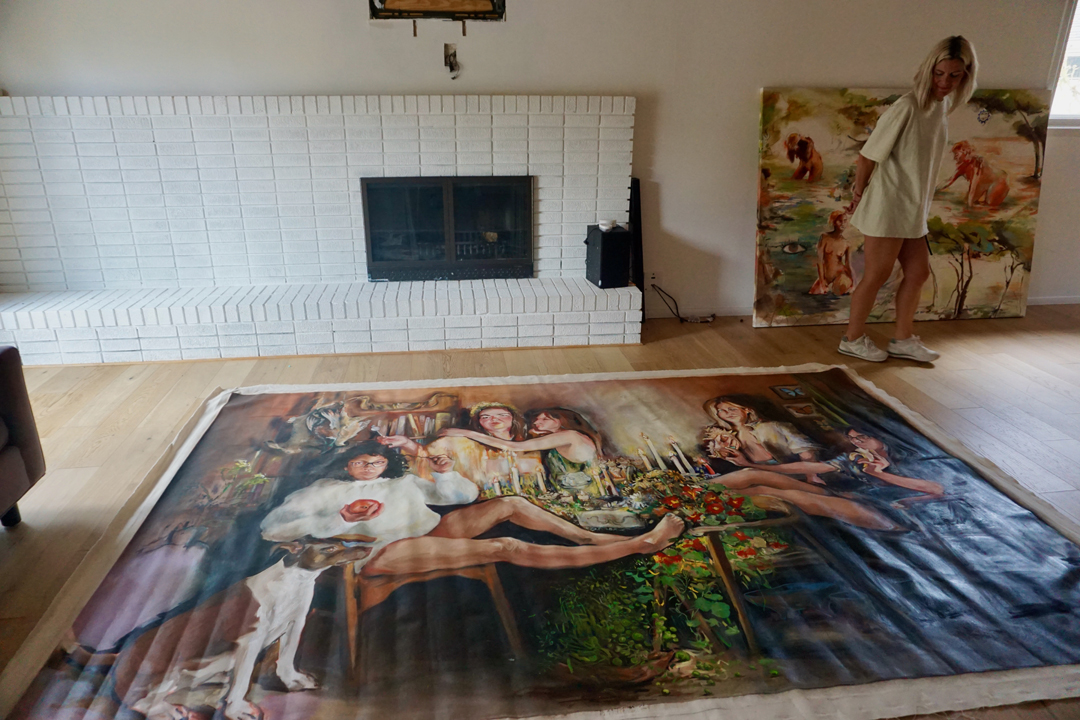
Much of this viewpoint is informed by Tucek’s artistic background. She grew up on Long Island, learning how to draw from professional illustrator Jeff Fisher as a middle school student. “I started going to his figure drawing classes on Wednesday nights, which is why I have such strong roots in figure drawing,” Tucek reminisces.
She later joined Fisher’s drawing excursions in the summer, traveling around the region and practicing group critiques. “So I was accustomed to that kind of environment from a really, really early age. And I think it built confidence and understanding of what I wanted out of [art].”
Tucek attended Pratt Institute as an illustration and communication design major, graduating in 2006, and was awarded a Master’s degree from CUNY Queens College in 2013. Yet Tucek’s school experiences not only resulted in hefty student loans and a host of jobs in museums and elementary art education to offset them, but in a more solid sense of the kind of artist she did—or did not—want to be. “I’m very turned off by work that is very one dimensional and very direct in saying ‘this is exactly what it is,’” says Tucek, contemplating what she calls “grad school rhetoric.”
When asked how she feels about the loss of her studio space, Tucek admits that it’s “horrible.” But for an artist who has honed a labyrinthine approach to artmaking that eclipses any single medium—much less a physical space—it felt fitting to meet Tucek in her soon-to-be former studio on the eve of her relocation across Denver.
She has much to look forward to, with or without a studio space. She’ll be producing another activation with Bolling for Black Cube Nomadic Art Museum on September 18, 2025, and next summer, she’ll exhibit work with La Napoule Art Foundation in France as part of an artist residency. She’s also excited about a combined, ceramic-focused residency with John Domenico at La Serra Collective.
Tucek’s fantasy-laden and stratified work is not contingent on one medium and therefore lays a foundation to artmaking that sees each new artistic language as another strand in her expressive weft. “I try to have these layers and layers and things that might hit you right away, but also things that can grow or keep giving,” says Tucek about her art. And it is this very stratification coupled with a “feral freedom” that will buoy the artist in the coming months.

